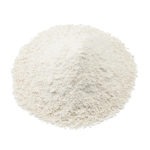IUPAC Name
(2S,3R)-2-amino-3-hydroxybutanoic acid
Cas Number
-
HS Code
2922.50.90
Formula
C4H9NO3
Industry
Animal Feed
Appearance
White powder
Common Names
Threonine
Packaging
25 Kg Bag
Brief Overview
Threonine is an amino acid with the chemical formula of C4H9NO3 and is used in the biosynthesis of proteins. It contains an α-amino group, a carboxyl group, and a side chain containing a hydroxyl group, making it a polar, uncharged amino acid. Threonine is synthesized from aspartate in bacteria such as E. coli.
Manufacturing Process
Threonine is an important amino acid which is used in animal feeds and medicines. One process which is known for its production is a fermentation method. In this technique a mutant of the genus Brevibacterium having resistance to bacterial α-amino-β-hydroxyvaleric acid (hereinafter referred to as AHV) which is a threonine analog is cultured. This process employs as an AHV-resistant mutant, a strain having homoserine dehydrogenase (hereinafter referred to as HD) in which feedback inhibition due to threonine has been removed. The yield of threonin produced by this process is low, and therefore, it is not an economical method for the production of threonine which is added to animal feeds. Accordingly, in order to enhance the yield of threonine, a mutant which is frequently used is one which is a lysine-producing strain. However, in this case, lysine is frequently produced as a by-product, which adversely affects the yield of threonine. Further, the separation of lysine from the medium is a complicating factor. A need therefore continues to exist for a method of producing threonine in improved yields by a fermentation technique.
Animal Feed Industry
Feed grade L-Threonine has various applications and benefit for livestock animals such as:
• Improvement amino acid balance,
• Prevent Threonine deficiency ,
• Stimulates lysine absorption and digestion,
• Serves as a source of energy, and regulated feed intake,
• Reduces nitrogen excretion which is beneficial to the environment Dossage Poultry : 0,4 – 0,8% Swine : 0,5 – 1,0%
